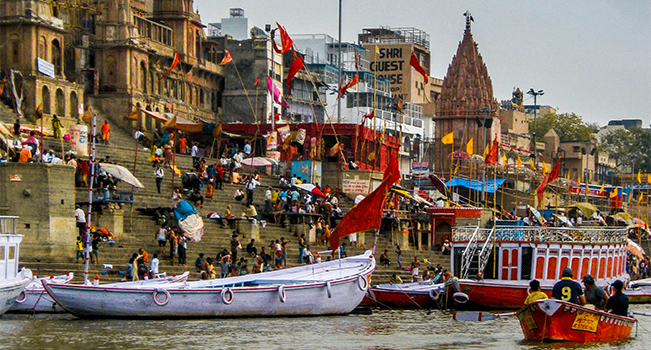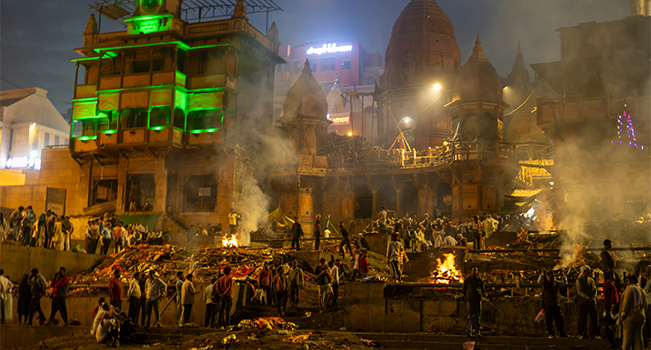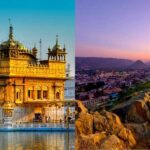India stands out as a major tourist destination in the world, attracting millions of travel enthusiasts every year. Among the many attractions across the country, Varanasi has a special uniqueness. Known as one of the oldest and most continuously inhabited cities in India, Varanasi is one of the oldest cities in the world and occupies a prime location. Its mention in Hindu sacred texts and mythology adds to its importance and interest.
Varanasi, commonly known as the city of Lord Shiva, the personification of the god of creation and destruction, is believed to liberate those within its sacred boundaries from the cycle of rebirth and is supposed to be an immersion in the waters of the river Ganges it even has the power to justify one of all sins.
During the Vedic period, Varanasi was known as Kashi. Known as the spiritual capital of India, the city is famous for its religious temples, museums, and forts.
Hailed as the cultural capital of India, Varanasi stands out for vibrant pottery, beautiful temples, and the famous Banarasi sarees that are revered by Hindus across the country, the city holds a deep cultural and spiritual significance. The flowing waters of the river Ganga provide scenic opportunities for photography and sightseeing. The beauty of Varanasi lies in its ghats, some buzzing with activity and excitement, while others exude peace and tranquility, soothing visitors Stunning ghats like Manikarnika and Assi ghats people to take a dip in the natural and spiritual environment of the city. The vibrant essence of Varanasi has captured the imagination of Bollywood, with several films showcasing its rich culture and unique atmosphere. For an enriching experience, families and friends are encouraged to visit from January to March or September to December, when the city is most inviting.
What is Varanasi famous for?
Varanasi is famous for its bathing ghats, where pilgrims cleanse themselves in the holy waters of the river Ganga, believed to wash away sins as a holy city, Varanasi prohibits the sale and consumption of alcohol, reflecting its religious significance. But his reputation extends beyond religious affiliation. Varanasi is famous for Indian handicrafts, especially the exquisite Banarasi sarees that reflect the rich silk weaving tradition of the city.
Varanasi: The places you shouldn’t miss
Kashi Vishwanath Temple:
The Kashi Vishwanath temple, situated in Varanasi, is one of the twelve Jyotirlingas, revered shrines dedicated to Lord Shiva. Nestled amidst the sacred waters of the Ganges River, it is often referred to as “The Golden Temple of Lord Shiva.” Beyond its remarkable architecture, the temple exudes a captivating ambiance. Surrounding the temple, numerous street vendors offer Banarasi sarees, local delicacies like Banarasi paan, and other famed Varanasi souvenirs. Visitors experience a harmonious blend of spiritual reverence and cultural immersion, making it an ideal destination for families. It is believed that seeking the divine presence of Lord Shiva here imparts strength and serenity, drawing devotees from across the country and beyond to receive his blessings.
Assi Ghat:
The spiritual charm of Varanasi attracts tourists from all over India who are attracted by its tranquil ghats. Among them, Assighat stands as the southernmost ghat, at the confluence of the Assi and Ganga rivers. A sacred Shiva Linga here attracts devout Hindus to worship and its importance has been noted in the Matsya Purana. During the Hindu months of Chaitra and Magha, pilgrims approach Assighat for a holy bath. Beyond its religious significance, the natural beauty of Assighat is breathtaking, offering a scenic boat ride and breathtaking views from the perspective of the nearby LolarkaKund The attraction of this ghat is its serenity and purity, enhanced by the spectacular flow of the Ganges.
Dasaswamedh Ghat:
Dasaswamedh Ghat, situated along the sacred river Ganga in Varanasi, is renowned as the city’s most spectacular ghat. Its Ganga Aarti is widely celebrated and exudes positivity and spirituality. According to ancient Puranas, it is believed that Lord Brahma performed a yajna sacrificing ten horses at this ghat. Besides its spiritual significance, Dasaswamedh Ghat is a popular tourist attraction due to its breathtaking views of the Ganga. Rebuilt multiple times by the Maratha Empire, it offers visitors exciting and fascinating experiences. The natural beauty of the ghat is captivating, evoking a sense of peace and spirituality in the air. Serving as both a place of worship and for holy baths, Dasaswamedh Ghat provides solace to those who visit, offering a deep connection to the divine.
Manikarnika Ghat
Manikarnika Ghat, one of the most revered and iconic ghats in Varanasi, holds profound spiritual significance for Hindus. It is believed that cremation at this ghat grants moksha, or liberation from the cycle of rebirth. Pilgrims from across the world visit Manikarnika Ghat to witness the age-old ritual of cremation, an integral part of the city’s sacred tradition. With its rich history and cultural significance, Manikarnika Ghat stands as a poignant reminder of the eternal cycle of life and death.
Ramnagar Fort:
Ramnagar Fort in Varanasi is famous for its rich Mughal architecture and ancient museums. Built in the 18th century by Maharaja Balwant Singh, the fort overlooks the river, Ganga. The museum has an interesting collection of vintage cars, swords, and more. In addition, religious structures such as Durga Mandir and The Dakshinmukhi Hanuman give it a charm. Visitors with families find it interesting. During the Ramleela festival, the fort comes alive with celebrations. With panoramic views of the lake and impressive architecture, it is a must-visit. The best times to explore are October-November or February-March, perfect for a getaway with family or friends.
Participating in these exciting activities in Varanasi will surely create lasting memories for your trip. Since Varanasi is packed with crowds throughout the year, it is advisable to get Varanasi tour packages in advance to avoid any hassle later.












